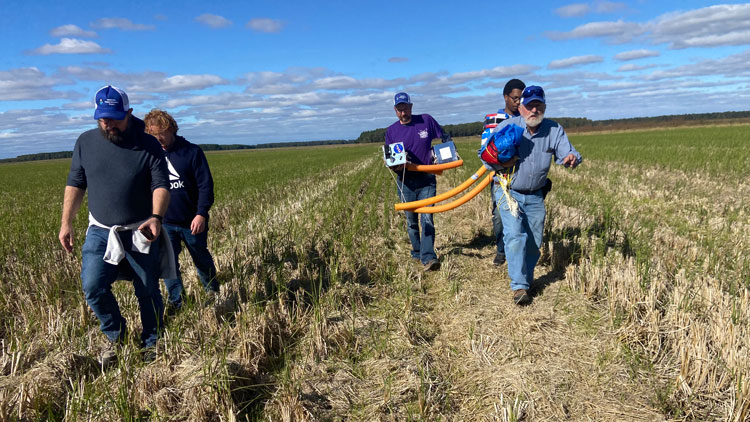A-State Students Making Final Preparations to Study Total Solar Eclipse on April 8
JONESBORO – Years of research and planning will culminate on Monday, April 8, when a total solar eclipse will be seen across parts of the state.
A group of faculty and student researchers from Arkansas State University have been working towards eclipse day as they participate in the Nationwide Eclipse Ballooning Project (NEBP), an endeavor sponsored by NASA.
“We are currently assembling the parts of the loads that will be sent with the helium balloon into the atmosphere to observe the total solar eclipse,” said Bimal Khadka, a senior physics major from Nepal.
Two teams from Arkansas were selected for NEBP and both teams are from A-State. Khadka said a lot of pressure is on everyone involved.
“There’s the usual pressure for balloon flights but what matters is that the students experience a potentially life-changing event while hoping that many things don’t go wrong,” said Dr. Ross Carroll, associate professor of physics.
“We are working to minimize the leakage of helium through the balloon which will ensure that we will be able to get to the desired altitude of 75,000 feet to 95,000 feet,” added Khadka. “We are also working on the vent system, which will allow us to remove excess helium from the balloon so it does not fly higher than our desired altitude and stays at the right altitude for a longer time.”
Leading up to the total solar eclipse, Khadka said many things need to be done to ensure a successful project.
“Beyond launching our balloon to livestream video from the upper atmosphere, we’ll be observing the total eclipse with a variety of telescopes and binoculars set-up by the Arkansas Space Grant Consortium at our research event,” continued Khadka.
“We will be attending a gathering of researchers at the Winthrop Rockefeller Institute on Petit Jean Mountain the weekend leading up to the total solar eclipse. Our team will be attending workshops and preparing equipment for our balloon flight,” said Carroll.
In the next week, the team will be reviewing their plans and making necessary adjustments.
“Once the eclipse is completed, we need to land the loads on the ground. We cut the balloon away from the load and it deflates, and our loads equipped with scientific equipment fall back to the ground with the help of a parachute,” said Khadka.
The load that will be carried by the balloons consists of a video system, GPS, transmission, and some scientific devices needed for the study of the surroundings and the eclipse.
One team will be on the ground working on the video system and transmission, sending and receiving signals with the systems on the balloon. The second team will be responsible for setting up the balloon and launching.
Khadka said this project is providing a real-world setting for students from different fields of study to work together towards a common goal.
"We have worked to develop different areas of the ballooning project which enhances important skills like teamwork, communication and understanding. It provides us with insight into scientific research which gives us the motivation, courage, knowledge and skills required for a professional career,” added Khadka.
There are challenges outside of their control. He said the weather can have a negative impact since they cannot operate in heavy rain or extreme wind.
“The eclipse does not wait for anyone, so we need to be prepared well enough to act in a timely manner,” he continued.
Khadka said while they do have a backup plan, they are working to make sure they do everything correctly.
“We are intensively working to make this project successful. However, there are still a lot of challenges. Since it requires a huge amount of time and dedication, it must be perfect,” he said.

Researchers prepare ahead of the Nationwide Eclipse Ballooning Project.
From left, Mitchell Clay, Jacob Rodgers, Dr. Will Slaton, Lloyd Thomas and Dr. Tillman Kennon.





